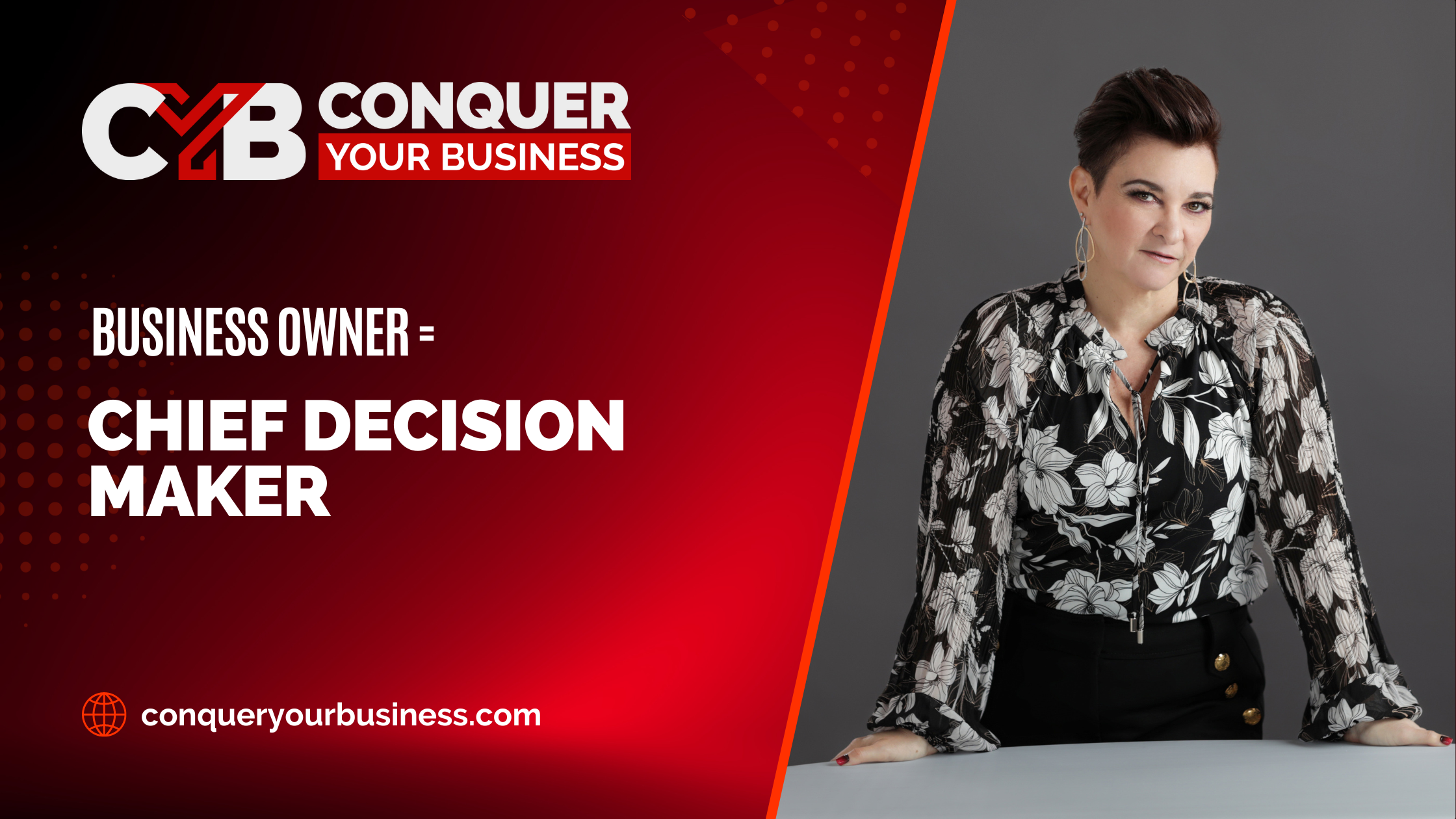As business owners, we hear a lot about the need to set goals for our business. In fact, we hear about this a lot. Goal setting is a common topic every January, at the start of every quarter, and at almost every business conference you will attend. Set goals, set goals, set goals. And don’t get me wrong, goals are important. I have goals for my own business and I help my clients achieve their goals for their business.
However, most people view the process as: set a goal, make a plan, work the plan, and achieve the goal. But the truth is that setting the goal is actually not the first part of the process. If you want to put a plan together for business growth, and set goals that will help you achieve the growth you want, you have to actually know where your business stands in a variety of areas.
Stages of Business Growth
A business is a series of systems that work together to provide a result. If your goal is to grow your business, your plan has to encompass improving all of the systems. Unfortunately, many business owners create their plans based just on revenue. While having a revenue goal is important – we all get happy and excited about bringing in revenue – focusing just on revenue does not paint the full picture of how well the business actually functions. So what should you be looking at in addition to revenue/finances? I recommend doing a deep dive into the following categories: marketing, branding, sales, team, strategy, offers/services, legal, and operational systems.
In addition to the different categories of your business to assess, it’s important to know what stage of business each of these categories are currently landing in: Launching, Leveraging, or Leading.
While the categories are pretty self explanatory, the stages of your business lay out like this:
Launching
The Launching phase is all about getting your ball rolling. It’s about getting the basics down, getting clients, helping those clients, and learning how to make money. It’s also the phase where business owners figure things out.
Leveraging
The Leveraging phase is about multiplying your resources. If you are functioning as an individual in every single category, you are basically putting a cap on your income. In the leveraging phase, you move out of trading dollars for hours, and into leveraging your resources like your time, your team, and your marketing, to grow your business.
Leading
The Leading phase is when you really become a business owner and the business is no longer dependent upon your involvement in every aspect of day-to-day operations. The systems are in place, the people to support those systems are in place, and the analysis is in place so that adjustments can be made. The business becomes a self-propelling entity that you are leading, but it is no longer entirely dependent on you. Instead, you are in the thinking role of visionary, rather than being involved in everyday tasks.
Business Success is Not a Smooth Straight Line
Be aware that it is completely normal to be doing really well in one category, and not as well in another. Success is not a nice, smooth, straight line. You don’t just easily rise to the top evenly in all categories at the same rate. Truth is, you wiggle your way up there. It is perfectly normal to move up a bit in one category, and then up a bit in another.
The challenges come when the weight of a particular category starts preventing the growth of the business. If you lag too far behind in one category, it can pull the whole thing down like an anchor, so it is important to wiggle your way up all across the board.
For example, I’ve worked with lawyers who are amazing at their services but they just do not have it together in any way shape or form with their finances. They don’t get enough of a retainer from their clients, or get their invoices out in time. As a result, their accounts receivable is through the roof, so they don’t have the cash flow to run their business. They are great at the legal services they provide, but they are a mess financially, and that becomes an anchor weighing them down and risking sinking their ship entirely and putting them out of business.
Or the case of a bookkeeping firm that had an absolutely amazing team in place to deliver the services – and being bookkeepers they had their money ducks in a row – but they had no marketing or client acquisition system. This was an anchor that was holding them back from intentionally growing their business, as instead of having a marketing plan, they were relying on people to find them haphazardly or referrals from other business owners. They had all these amazing goals for growth but didn’t understand why they weren’t getting past a particular point. They were literally putting their success in the hands of everyone else but themselves by not having any proactive, intentional consistent way to attract new clients. There’s just no such thing as build it and they will come. If your team category and your services category are strong, but your client acquisition and marketing categories are a mess, it is going to pull your business down.
These problems are not a surprise and there is zero judgment around having them. Doing what your business does for a living, and growing a business are two completely different things. You started your business to do the thing that your business does. Many business owners put all of their time, money, and effort into getting really good at what the business does because that is the work that they love doing, but they don’t put that same time, money, and effort into learning how to own, run, or grow a business.
Not only is it normal to not be at the same stage across all of the categories, it is normal that the different categories have different priorities at different times. Everything cannot be an emergency. Instead, you have to focus on what is important based on the other things going on in your business.
The Problem is Never the Problem
In my corporate job we used to say, “the problem is never the problem” which means that the problem you feel is not the problem you actually have. If the only thing that you are measuring in your business is revenue, you’re going to have a hard time breaking through, because most of the time the problem you feel is not the problem you have.
For example, you aren’t making the revenue you want, so you think you have a sales problem. And that might be true – maybe you need to improve your sales conversations skills. But most of the time a revenue problem is a marketing problem – you’re not doing enough to make people aware of your business.
Another example of this is when you interpret being overwhelmed as a time management problem. And sure – there’s always room for improving your focus and time blocking skills. But most of the time when a business owner tells me they’re completely overwhelmed and working 14 hour days, it’s not a time management problem at all – it’s a team problem! They’re not hiring the team that could actually solve the problem.
Introducing the Business Growth Profiler
To help other business owners perform this assessment for themselves, and be able to clearly identify where they need to be focusing their efforts, I have created the Business Growth Profiler. In it you will find the categories that you need to be considering, as well as an overview of each stage of business for that category.
The key to getting the most out of this new tool is committing to having one of the hardest types of conversations you can have: an honest conversation with yourself. But being brutally honest about the state of your business is the only way to create the roadmap to reaching your goals.
To download the Business Growth Profiler, go to Business Growth Profiler.
Let’s get you on track to lead your business, achieve your goals and turn your business into a well oiled machine.




